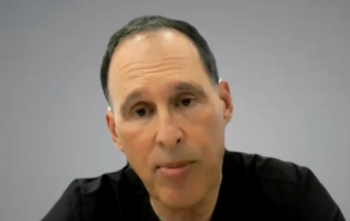
The Nursing Shortage: Why 'Normalcy' Is Still a Crisis
A common misconception regarding today's dire shortage of healthcare workers in the U.S. is that the COVID-19 pandemic triggered it. Although it's true that the pandemic both exacerbated and shined a spotlight on the problem, the healthcare worker shortage existed well before the coronavirus wreaked havoc on our healthcare system, and it is not over. Compounding attrition, burnout and low rates of graduations among healthcare educational institutions mean the shortage is expanding, and it is imperative to realize that our new feeling of post-COVID "normalcy" is still a crisis that demands immediate attention.
What is driving the crisis
Job vacancies in the healthcare and social assistance sector grew to 1.8 million in 2023 from 1.2 million in 2019, according to a June
Predictive modeling indicates that this gap between the supply of healthcare professionals and demand in the U.S. will continue to widen over the next five to ten years. This has serious implications for Americans' ability to access quality care and will drive up overall healthcare costs — already at $4.5 trillion annually— as untreated conditions such as chronic illnesses worsen and become more difficult and expensive to manage.
Put simply, there are not enough doctors, nurses and allied professionals to cover the growing need for healthcare in America.
The impact on patient care is significant, and it's a responsibility we all share.
Continued demand fueled by several factors
Looking at the nursing shortage, we often point to the apparent causes of dwindling supply as nurses exit the profession due to age or burnout. We can point to an insufficient supply of new nurses with too few young people entering the profession and schools struggling to secure enough faculty and resources to educate the next generation.
But when you study it further, it becomes evident that the causes of supply insufficiency coupled with many reasons for increasing demand mean we are heading to a crisis that will impact our ability to take care of the people in our communities.
Increased Demand Due to Aging. As the country's largest generation—Baby Boomers, born between 1946 and 1964—moves into retirement, healthcare services and costs will increase as this population seeks treatment and long-term care for chronic illnesses common to aging, such as heart failure, cancer, arthritis, and hypertension.
Increased Demand Due to Poor Health. The demand for healthcare services is driven by another factor beyond aging – poor health. According to the National Institutes of Health, more than two in five (41.9%) American adults, for example, were considered to have
Patients with multiple chronic illnesses require more interactions with healthcare providers, including nurses.
On the supply side, an exodus of nurses from the profession and a decline in people entering the profession are creating vacancies that provider organizations are having difficulty filling.
Decreased Supply Due to Aging. Nearly one-third (31%) of registered nurses are aged 55 and older, according to a 2022 national nurse
Decreased Supply Due to Clinician Burnout. The pressures during and immediately after Covid-19 also have driven many nurses from the profession. And while the outsized demand for services during Covid has eased, the large number of unfilled nursing positions – 62% of provider organizations
Meanwhile, nursing school enrollment is not growing fast enough to meet future demand for nurses. The American Association of Colleges of Nursing
Finally, even if provider organizations want to hire nurses, they typically face serious budget constraints that make it challenging to afford a higher payroll or even keep open their doors. Hospital labor costs, which comprise 60% of an organization's budget,
As dire as it all seems, there is actually a solution.These trained professionals do exist.Just not always within driving distance.
The unrealized value of contingent staffing
Many people had never heard of travel nurses before COVID-19. Still, travel nurses were regularly deployed pre-pandemic to fill care gaps resulting from everyday life occurrences (which include illness, vacations, parental leaves) as well as high-volume periods such as labor and delivery season (September) flu season (December through February), and summer, when trips to the emergency department spike. Travel nurses are not just a solution to the shortage, they are a reassurance for healthcare organizations that they can maintain their commitment to patient safety, quality and long-term financial stability.
Hospitals and healthcare systems around the country rely on this approach of sending seasoned travelers to fill vacancies and bring care to underserved units and communities. The travelers are known to be experienced, adaptable, and ready to hit the ground running, so the health systems can avoid diversions or closing units, which is the worst-case scenario.
The crisis remains
Hospitals and health systems have a responsibility to provide quality care to the communities they serve. Nurses are indispensable to fulfilling this mission. An undersupply of nurses and other clinicians arguably is the biggest obstacle to meeting healthcare's mandate.
The clinician shortage, however, is not going away. Many healthcare providers will continue to struggle finding enough nurses to support their organization with proper patient-nurse ratios. Thus, contingent staffing through a reputable provider will remain a vital part of a strategy to keep a community covered.
Despite many references to the return to "normalcy" in post-pandemic America, the shortage of nurses and other clinicians today remains a crisis. Contingent workers are an invaluable resource that healthcare leaders can rely on to fill the care gap and maintain a healthy revenue flow.
Bart Valdez is CEO of Ingenovis Health, a healthcare staffing company.
Newsletter
Get the latest industry news, event updates, and more from Managed healthcare Executive.

















































